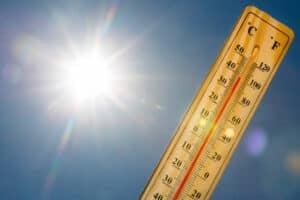Discover the remote Marion Island, a sanctuary for marine life and vital research hub.

Here’s a quick trivia question: where is South Africa’s most remote nature reserve? A clue for you, if you’re struggling: you’re not likely to get there unless you’re a volunteer scientific researcher.
Around 2 300km southeast of Cape Town – roughly halfway between South Africa and the continent of Antarctica – lies the Prince Edward Archipelago cluster of islands.
The biggest of these, Marion Island, is home to a permanent research station and both it and its brother island, Prince Edward, are not only officially South African territory, they are also both accorded the highest protected status: “Special Nature Reserve”.
This means the rocky islands, which are home to a variety of birdlife and sea creatures, are set aside solely for purposes of conservation of biodiversity and research.
Marion Island Marine Mammal Programme
One of the main research projects is the Marion Island Marine Mammal Programme, which has been conducted – interrupted – for more than 40 years, by the University of Pretoria’s Mammal Research Institute.
Because Marion Island is the home base of southern elephant seals, sub-Antarctic fur seals, Antarctic fur seals and killer whales (commonly known as orcas), it is the optimal spot for long-term monitoring of how they are responding to environmental change.
READ MORE: ‘Biodiverse economy can bring jobs’ – Ramaphosa

Monitoring of the elephant seals has already turned up an interesting poser for researchers. A large portion of female southern elephant seals do not breed annually at the island, mysteriously mating elsewhere to return and pup during the following breeding season.
This interrupted pattern of breeding is unexpected and researchers are trying to understand how this behaviour may impact affect population growth and future fitness of elephant seal population at Marion Island.
The large populations of the two fur seals species on Marion Island are monitored to assess responses to environmental change. Long-term studies are aimed at detecting changes in diet, foraging behaviour and breeding.
Fur seals are an abundant predator in the region and population sizes are increasing for Antarctic fur seals and possibly decreasing for sub-Antarctic fur seals. These opposing trends in growth for these two species indicate different factors impacting on them.
Killer whales
Resident killer whales at Marion Island could be important predators of seals and other local prey species, such a penguins. Intensive photographic surveys of orcas throughout the year have allowed researchers to identify important individuals, the size of the killer whale population and their foraging habits.
The programme is dedicated to understanding how these populations are changing and how they are linked to each other.
READ MORE: Migratory species at risk across the planet, UN report warns

Marion Island seal populations were historically exploited for blubber harvesting from the early 1800s to the mid-1900s. Blubber harvesting ceased in the ’30s when population numbers had dropped too low to be economically viable.
Without the continued monitoring of these populations, researchers would not have an indication of the extent of their recovery, or a benchmark for future comparisons of population change.
The status of top predator populations at Marion Island represents the health of the surrounding ocean and is an important indicator of system change throughout the Southern Ocean.
The programme has close links with the South African National Antarctic Programme (embedded within the department of environmental affairs) that provides logistical support for personnel and access to and from the island.
Funding challenges and opportunities for support
Yet, given the demands on all budgets – whether government or private – there is also room for support and donations. Seal and killer whale work is expensive, the researchers point out.
Foraging ecology studies aided by satellite-linked tracking is particularly demanding on the limited budget. Yet it is central to addressing research questions and assisting conservation efforts.
READ MORE: Nature’s magnificence unveiled, world’s largest iceberg emerges after decades

- To find out more: www.marionseals.com






